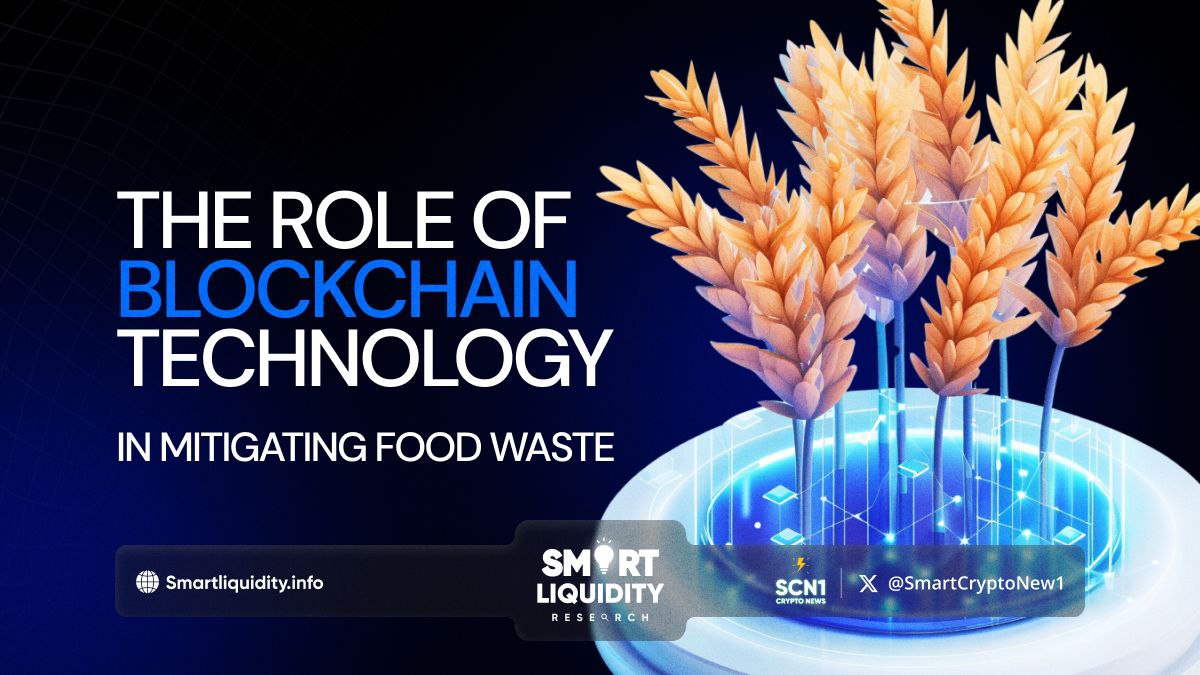The Role of Blockchain Technology in Mitigating Food Waste


The role of blockchain technology in mitigating food waste. Food waste is a pressing global issue with significant economic, social, and environmental implications. According to the Food and Agriculture Organization (FAO), approximately one-third of all food produced for human consumption is wasted annually.
This not only results in financial losses but also contributes to greenhouse gas emissions and depletes natural resources. However, emerging technologies, such as blockchain, offer innovative solutions to address this challenge.
Blockchain technology, best known for its use in cryptocurrencies like Bitcoin, is a decentralized digital ledger that records transactions across multiple computers in a way that ensures security and transparency. This technology is now being explored for its potential to revolutionize various industries, including the food supply chain, to combat food waste.
Enhancing Traceability and Transparency
One of the primary advantages of blockchain technology is its ability to enhance traceability and transparency within the food supply chain. By recording every transaction and movement of food products on a blockchain, stakeholders can easily trace the origin and journey of food items. This visibility helps in identifying points of inefficiency or waste, such as delays in transportation or storage mishandling, and allows for quick corrective actions.
For instance, if a batch of perishable goods is found to be spoiled upon arrival at a retail store, blockchain records can help pinpoint where the spoilage occurred—whether during transportation, at the distribution center, or the point of harvest. This level of traceability not only reduces waste but also ensures food safety by enabling swift recalls of contaminated products.
Optimizing Supply Chain Management
Blockchain technology can streamline supply chain management by providing real-time data on inventory levels, demand forecasts, and shipment statuses. This real-time data enables better coordination and planning among farmers, distributors, retailers, and consumers, reducing the likelihood of overproduction and subsequent waste.
Smart contracts, which are self-executing contracts with the terms directly written into code, can automate various aspects of the supply chain. For example, payments to farmers can be automatically released once the delivery of goods is confirmed on the blockchain, reducing delays and financial uncertainties. Similarly, retailers can automate orders based on inventory levels tracked on the blockchain, ensuring a steady supply of fresh products and minimizing excess stock.
Encouraging Sustainable Practices
Blockchain can also promote sustainable agricultural practices by providing verifiable data on farming methods and inputs. Consumers are increasingly demanding transparency about the origins and environmental impact of their food. By leveraging blockchain, farmers can certify their products as organic, sustainably sourced, or fair trade, providing consumers with the information they need to make informed choices.
Moreover, blockchain-based platforms can facilitate direct transactions between farmers and consumers, bypassing intermediaries and reducing food miles—the distance food travels from farm to fork. This not only supports local economies but also reduces the carbon footprint associated with long supply chains.
Reducing Food Waste at the Consumer Level
Blockchain technology can empower consumers to reduce food waste through better information and incentives. For instance, blockchain-enabled apps can provide users with information on the shelf life and optimal consumption timelines of their purchased products. Additionally, these apps can suggest recipes based on available ingredients, helping users utilize what they have before it spoils.
Furthermore, loyalty programs or rewards can be integrated into these apps to incentivize sustainable purchasing and consumption behaviors. Consumers who consistently buy and use food efficiently can earn rewards or discounts, fostering a culture of mindful consumption.
Conclusion
The integration of blockchain technology in the food supply chain holds significant promise for mitigating food waste. By enhancing traceability, optimizing supply chain management, encouraging sustainable practices, and empowering consumers, blockchain can address the inefficiencies and lack of transparency that contribute to food waste. As this technology continues to evolve, its application in the food industry could play a crucial role in building a more sustainable and efficient food system.
Blockchain technology is not a panacea, but it offers a valuable tool in the global effort to reduce food waste. As stakeholders across the food supply chain adopt and innovate with blockchain solutions, we can expect to see meaningful progress in addressing this critical issue.
REQUEST AN ARTICLE
DISCLAIMER:
“The information provided on this platform is for general informational purposes only. All information on the platform is provided in good faith; however, we make no representation or warranty of any kind, express or implied, regarding the accuracy, adequacy, validity, reliability, availability, or completeness of any information on the platform.”




